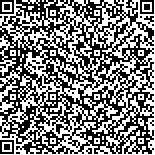| 摘要: |
| 为拓展无人机搭载多光谱相机在海上应用的广度和精度,利用2021年1月、3-7月共6个航次的胶州湾海域现场观测数据, 采用多种数理统计方法, 开展了海水浊度和悬浮物粒径时空分布特征及基于多光谱数据的遥感反演研究。浊度和悬浮物粒径的分析结果表明, 胶州湾湾内海域表层浊度冬季偏低, 春夏季高, 特别是5月浊度最高, 是春季水华暴发浮游植物大量繁殖的结果。胶州湾悬浮颗粒以极细砂为主; 悬浮物粒径冬季较粗、春季较细、夏季最小, 与水动力条件的季节变化密切相关。将多光谱数据计算得到的不同波段离水辐照度反射率与浊度和悬浮物粒径分别进行相关性分析, 结果显示红光波段(660~680 nm)的辐照度反射率对浊度和粒径参数最敏感。基于红光波段的波段组合构建了多种函数类型的浊度反演模型, 基于450和660 nm处的离水辐照度反射率构建的多项式模型反演效果最好, 预测浊度与实测浊度的相关系数为0.82, 预测浊度的均方根误差为1.448 FTU。通过基于红光波段的波段组合以及后向散射系数分别构建平均粒径的反演模型, 基于555和660 nm处的离水辐照度反射率构建的多项式模型对平均粒径有较好的预测效果, 预测结果的均方根误差为0.051 φ, 平均相对误差为1%。已构建的基于胶州湾海域的两类遥感反演模型可以推广应用到其他二类水体。 |
| 关键词: 遥感反演模型 多光谱数据 浊度 粒径参数 后向散射系数 胶州湾 |
| DOI:10.11759/hykx20220822002 |
| 分类号:P756 |
| 基金项目:中国科学院科研仪器设备研制项目(YJKYYQ20190047) |
|
| Remote sensing inversion model of seawater turbidity and suspended particle size based on multispectral data |
|
CHEN Xiang-jian1,2, LIU Hong-xia1, ZHANG De-qiang2, YUAN Sheng-ming2, LIN Chao3, PANG Chong-guang2
|
|
1.School of Mathematics and Systems Science, Shandong University of Science and Technology, Qingdao 266590, China;2.Key Laboratory of Ocean Circulation and Waves, Institute of Oceanology, Chinese Academy of Sciences, Qingdao 266071, China;3.State Key Laboratory of Applied Optics Changchun Institute of Optics, Fine Mechanics and Physics, Chinese Academy of Sciences, Changchun 130033, China
|
| Abstract: |
| A remote sensing inversion model was developed based on multispectral data and the spatiotemporal distribution of seawater turbidity and suspended solid particle sizes in Jiaozhou Bay in January 2021 and March-July 2021. The model was developed using various mathematical and statistical methods to enhance the accuracy of multispectral cameras and expand their drone-based applications in the sea. Analysis of the turbidity and suspended particle size shows that the surface turbidity of the water in Jiaozhou Bay is low in winter and high in spring and summer. Phytoplankton blooms in the spring, leading to the highest turbidity in May. The suspended particles in Jiaozhou Bay consist primarily of very fine sand. The suspended matter particle size is strongly influenced by the seasonal variation of the hydrodynamic conditions, leading to it being coarser in winter, relatively finer in spring, and the smallest in summer. The correlation analyses between the irradiance reflectance of different bands, as calculated from the multispectral data and turbidity, and suspended particle size indicate that the reflectivity of the red band (660-680 nm) has the highest sensitivity to variation in turbidity and particle size parameters. Turbidity inversion models of various function types are constructed based on the band combination of red wavelengths. The polynomial model based on the effluence of water irradiance at 450 and 660 nm achieves the best-predicted results, with a correlation coefficient between predicted turbidity and measured turbidity of 0.82 and a root mean square error of 1.448 FTU. The inversion models of the mean particle size are established by a band combination based on the red light band and the backscattering coefficient. The polynomial models based on the effluence of water irradiance at 555 and 660 nm are found to be able to predict the average particle size well, with a predicted result root mean square error of 0.051 φ and mean relative error of 1%. The two types of remote sensing inversion models that have been constructed can also be generalized and applied to other type-II water bodies. |
| Key words: remote sensing inversion model multispectral data turbility particle size parameter backscatter coefficient the Jiaozhou Bay |
